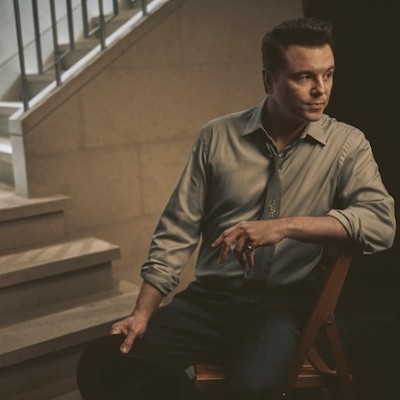Dec 9, 2025 12:28 PM
In Memoriam: Gordon Goodwin, 1954–2025
Gordon Goodwin, an award-winning saxophonist, pianist, bandleader, composer and arranger, died Dec. 8 in Los Angeles.…
When all the gumbo’s been digested following seven days of music at the New Orleans Jazz & Heritage Festival, it seemed that the music fell into three camps that might oppose each other, but actually trace the century-old music’s history.
The most obvious camp was the veterans and true jazz warriors, who have stomped on stages around the world and still have something to say. On Saturday, April 28, Charles Lloyd and the Marvels started out bluesy with a distinctly African tinge, as Greg Liesz’s pedal steel took the band in a rock direction, before slipping back into jazz. The band also would veer into a spacey groove, before Lloyd returned the ensemble to Earth with a couple of lines. Midway through the set, the bandleader introduced Lucinda Williams, who presented a few of her songs, bringing the audience to its feet. She sang with power and ferocious passion, especially when named-checking several Louisiana towns on “Joy,” taking Lloyd back to musical territory suited to Memphis, where he spent time playing in r&b bands.
The following day, it was Kidd Jordan and the Improvisational Arts Quintet with fellow octogenarian Alvin Fielder on drums that passed down hard-won jazz wisdom. The band also featured Jordan’s sons, Marlon on trumpet and Kent on flute and piccolo. The music ebbed and flowed with powerful group improvisations, leading into solos that hinted more at conventional jazz and gutbucket r&b. Jordan, 83, blows a little more carefully now, but still with control and a spirituality that proves post-Coltrane/Ayler music continues to have something deep and thrilling to communicate.
Another camp passing down jazz knowledge, besides the octogenarians, included players working with the traditional jazz music of New Orleans. Even though much of it has been standardized, it still speaks to the beauty and uniqueness of New Orleans 300 years after the city’s founding. Banjoist Don Vappie put together a band of hip, contemporary players to do a great set of King Oliver tunes. These songs always have meaning in the Crescent City, and it was great to hear cats younger than 50 play this material with verve and excitement. The compositions might be old to the rest of the world, but in New Orleans, they still are a part of daily vernacular.
On Monday, in the Economy Hall tent, trombonist David Harris played blues in a duet with pianist and vocalist Cynthia Girtley. The pair’s rendition of a Billie and De-De Pierce favorite, “Lonesome Road,” resulted in some of the deepest and most profound music to be heard that day.
The final camp represented at the festival comprised a younger set of musicians, who brought electronica and many other musical techniques to their performances. Whether it was Nicholas Payton starting his set with a dark Miles Davis-vibe that turned into several songs of contemporary r&b-inflected jazz, or Terrace Martin reworking Donny Hathaway in a 21st-century fashion, there were innumerable sets displaying a contemporary feel. Christian Scott Atunde Adjuah performed with an attentive band capable of speaking in the many tongues of modernity. Even Terence Blanchard added some dense electric textures and digital effects to his set on the festival’s last Sunday in the jazz tent.
One of the strongest sets at the festival was the Sean Jones Quartet closing out the jazz tent at the fairgrounds on the final Saturday of the 49-year-old event. It was a great, straight-ahead session, as Jones played with a pure and beautiful tone on trumpet and flugelhorn. His songs moved subtly, so that by the end of the performance, listeners were in an unexpected but not unrecognizable place.
It demonstrated that one strength of the New Orleans Jazz & Heritage Festival—and the city in general—is the ability to showcase all facets of the music with both seriousness and uninhibited joy. DB

Goodwin was one of the most acclaimed, successful and influential jazz musicians of his generation.
Dec 9, 2025 12:28 PM
Gordon Goodwin, an award-winning saxophonist, pianist, bandleader, composer and arranger, died Dec. 8 in Los Angeles.…

Flea has returned to his first instrument — the trumpet — and assembled a dream band of jazz musicians to record a new album.
Dec 2, 2025 2:01 AM
After a nearly five-decade career as one of his generation’s defining rock bassists, Flea has returned to his first…

“It’s a pleasure and an honor to interpret the music of Oscar Peterson in his native city,” said Jim Doxas in regard to celebrating the Canadian legend. “He traveled the world, but never forgot Montreal.”
Nov 18, 2025 12:16 PM
In the pantheon of jazz luminaries, few shine as brightly, or swing as hard, as Oscar Peterson. A century ago, a…

Dec 11, 2025 11:00 AM
DownBeat presents a complete list of the 4-, 4½- and 5-star albums from 2025 in one convenient package. It’s a great…

Seth MacFarlane takes a turn from his television and film career to sing arrangements made for Frank Sinatra, but never recorded.
Nov 18, 2025 12:04 PM
“I’m not gonna lie to you — I don’t know why I thought this was about The Naked Gun, but I’m happy it’s…